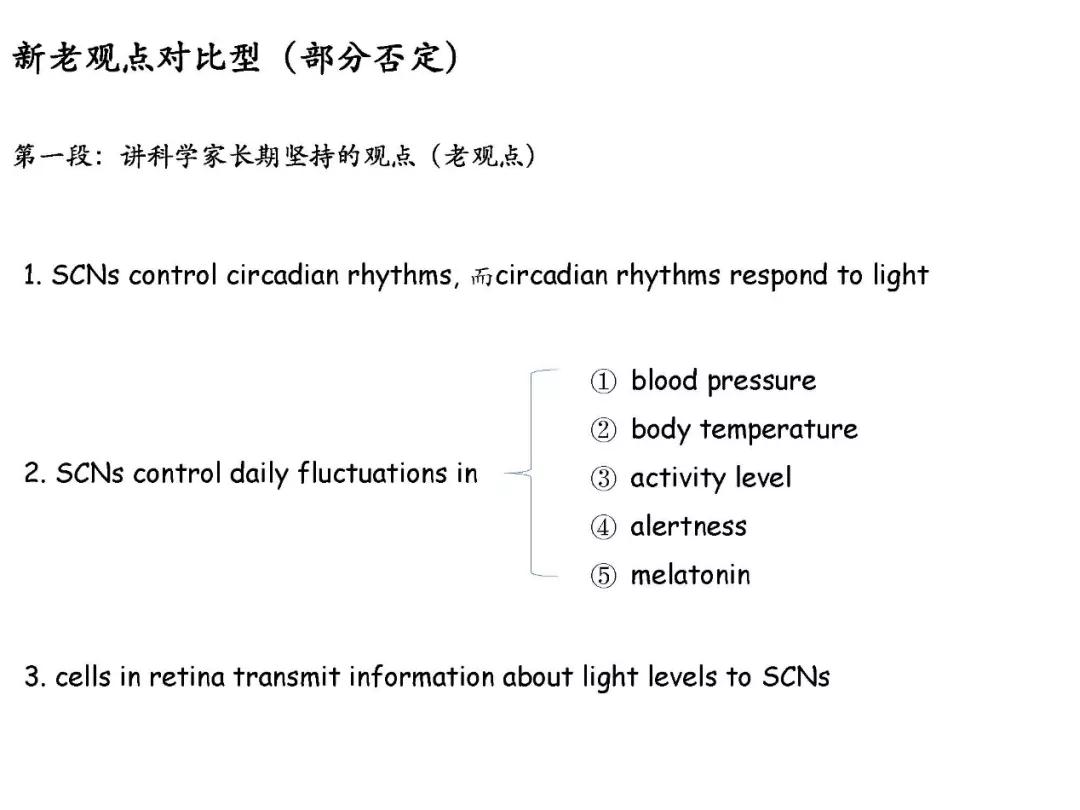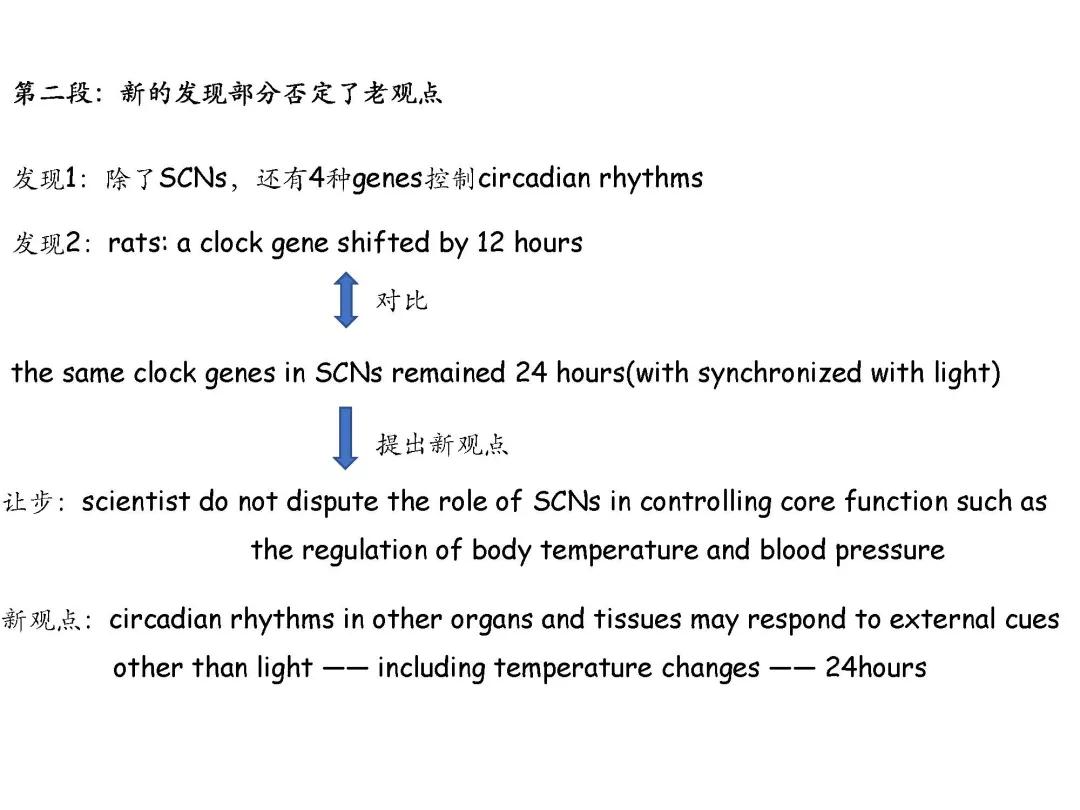GMAT阅读文章题材多样,文章晦涩难懂,未经训练很难在规定时间做完题目。而实际上这些文章结构都是有规律可循的,掌握了文章的逻辑脉络就会发现其实这些文章信息量很少。所以在阅读文章过程中重点关注文章逻辑信号词,梳理文章结构脉络能够起到事半功倍的作用。接下来我们以官方指南里的一篇文章为例,告诉大家怎样梳理文章脉络。
Scientists long believed that two nerve clusters in the human hypothalamus, called suprachiasmatic nuclei (SCNs), were what controlled our circadian rhythms.Those rhythms are the biological cycles that recur approximately every 24 hours in synchronization with the cycle of sunlight and darkness caused by Earth’s rotation. Studies have demonstrated that in some animals, the SCNs controldaily fluctuations in blood pressure, body temperature, activity level, and alertness,as well as the nighttime release of the sleep-promoting agent melatonin. Furthermore, cells in the human retina dedicated to transmitting information about light levels to the SCNs have recently been discovered.
Four critical genes governing circadian cycles have been found to be active in every tissue, however, not just the SCNs, of flies, mice, and humans. In addition, when laboratory rats that usually ate at will were fed only once a day, peak activity of a clock gene in their livers shifted by 12 hours, whereas the same clock gene in the SCNs remained synchronized with light cycles. While scientists do not dispute the role of the SCNs in controlling core functions such as the regulation of body temperature and blood pressure, scientists now believe that circadian clocks in other organs and tissues may respond to external cues other than light-including temperature changes-that recur regularly every 24 hours.
文章段讲了一个科学家长期坚持的观点,即SCNs control circadian rhythms, 而circadian respond to light. 第二段通过转折逻辑词however说明开始讲一个新的观点了,但这个新观点只是部分否定了之前的观点,认为除了上述观点讲的SCNs, 还有4中genes控制circadian rhythms. 最后得出结论:circadian clocks in other organs and tissues may respond to external cues other than light.
这就是典型的新老观点对比型文章(驳论文)中的部分否定类。即新观点没有完全反驳老观点,而是对老观点是一种补充。
文章的逻辑结构见下图所示:

